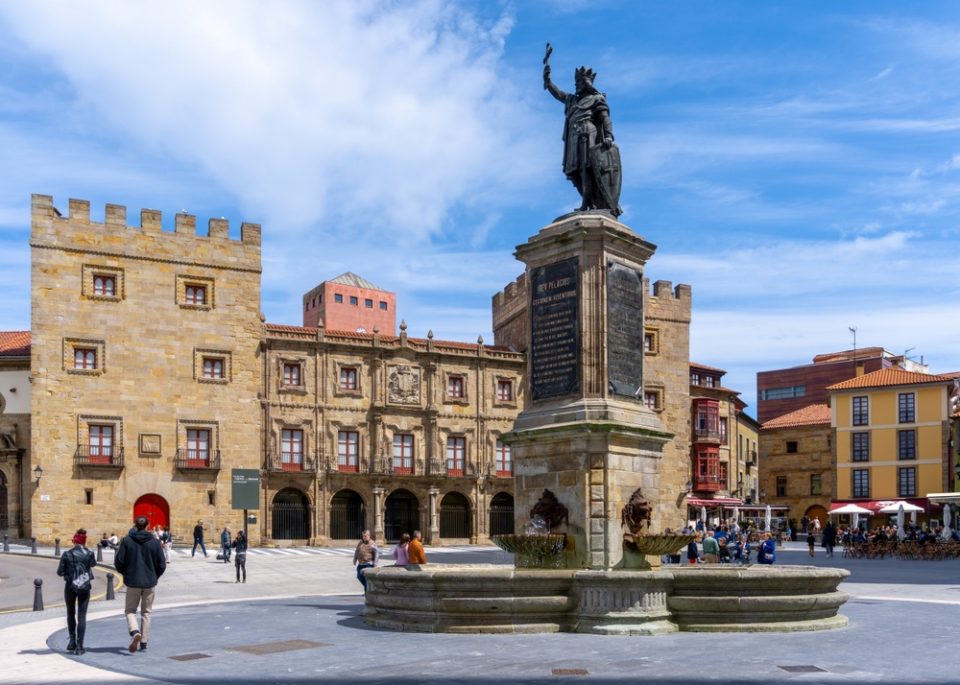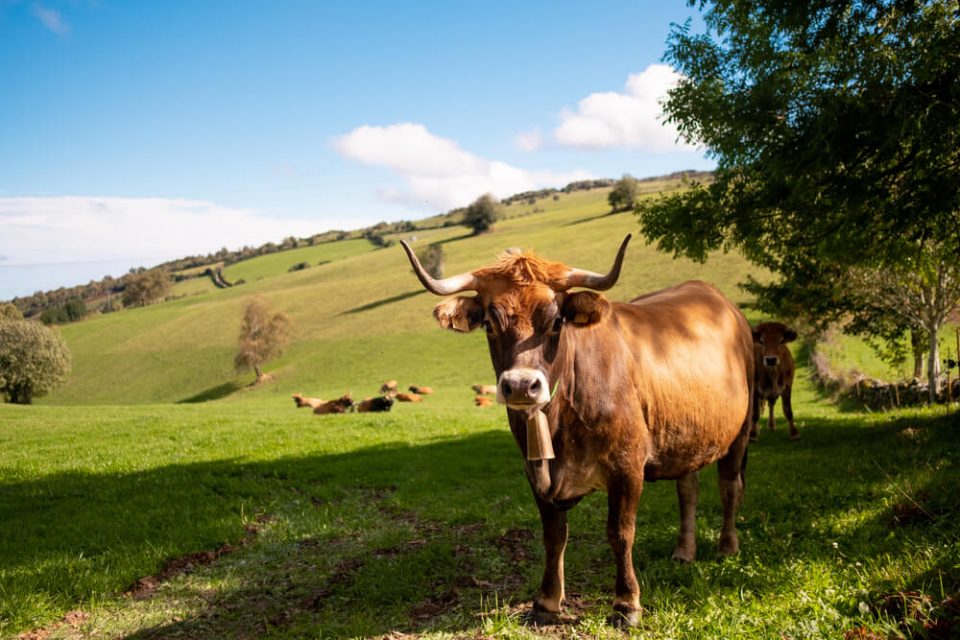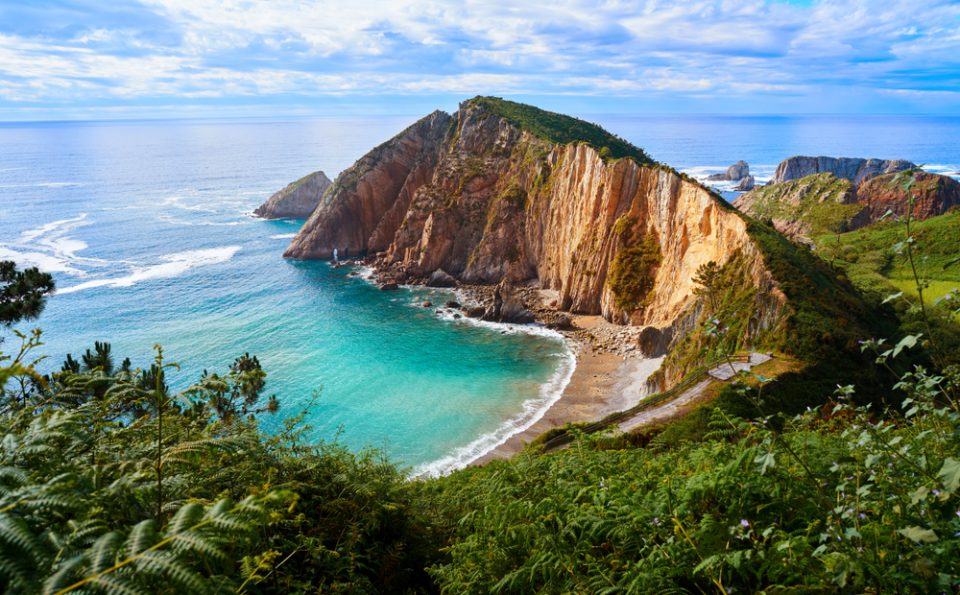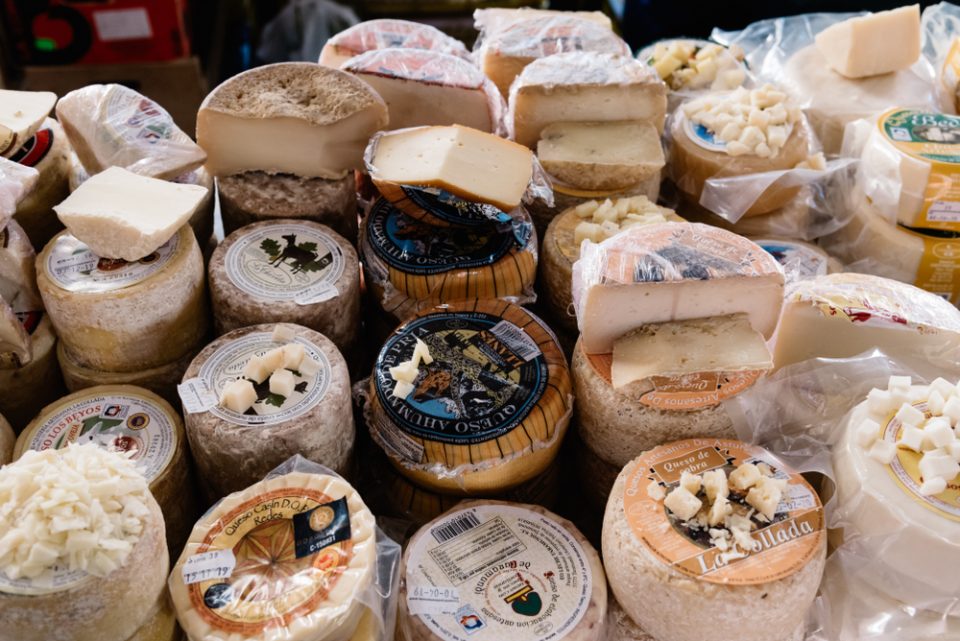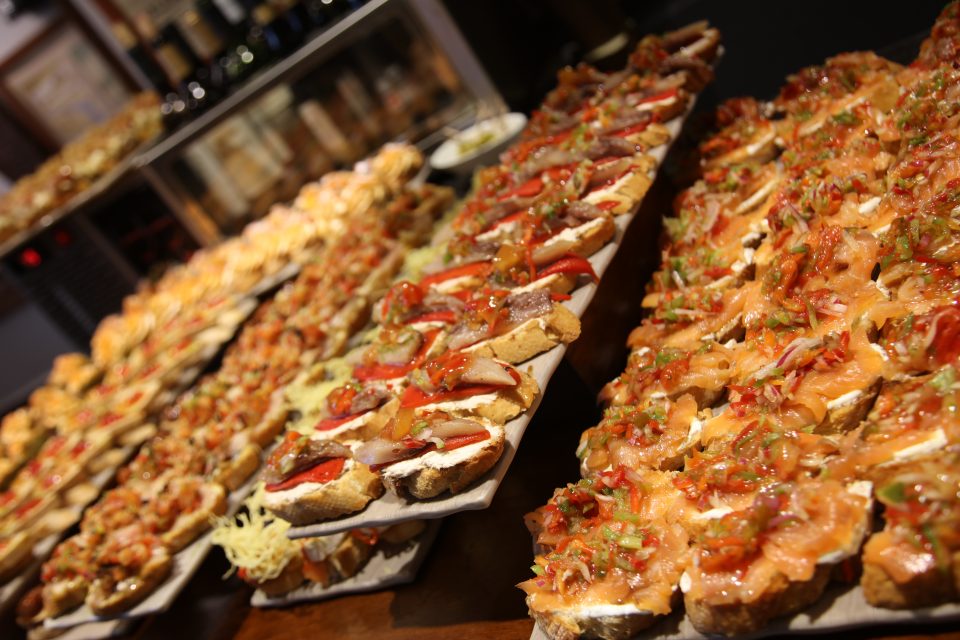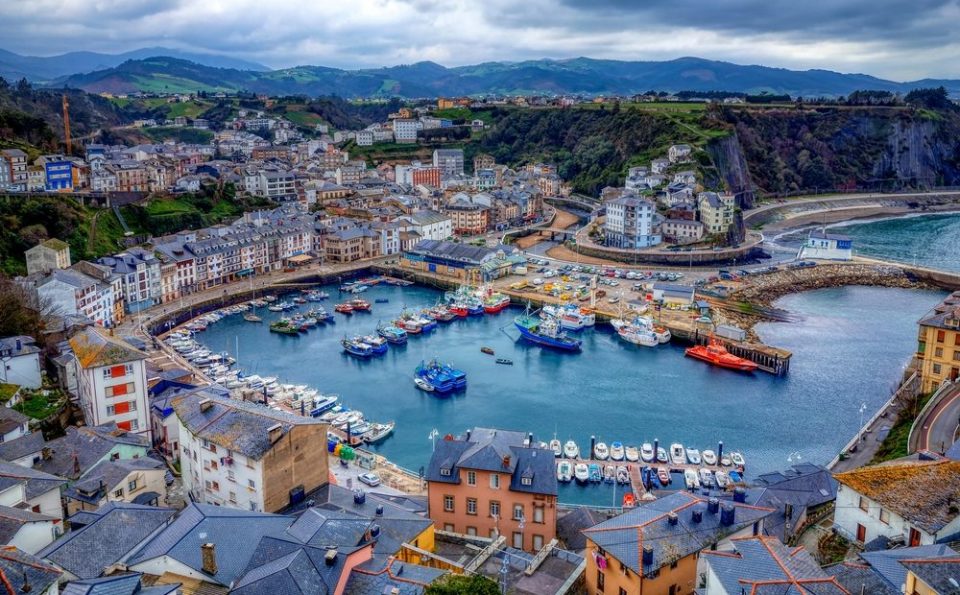length
10 Days
difficulty
Moderate - Challenging
trip cost
from $1790 pp
Nature Immersion
Cultural Interest
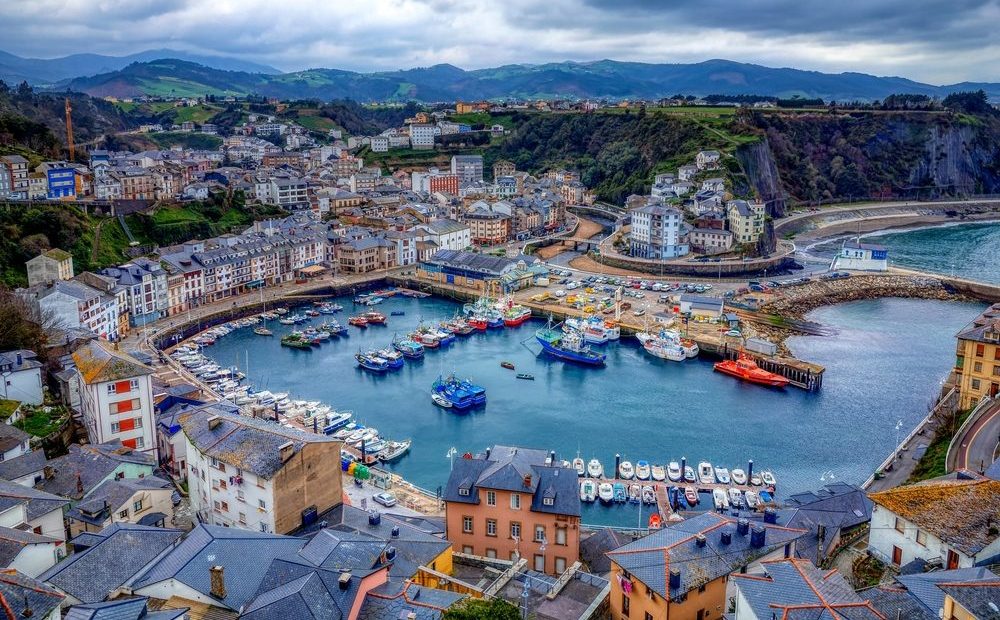
Highlights
Get Ready For
- Marvel at the spectacular natural monuments of Praia das Catedrais
- Hike the less visited trails of Asturias’ ‘Green Coast’
- Visit beautiful Cadavedo village with its well preserved architecture and traditional horreos
- Indulge in fresh seafood and tasty Asturian specialities in Gijon
- Explore the narrow streets of Luarca’s ‘Fisherman’s Quarter’

On the trail
What it's like underfoot
After leaving Gijon city behind, the Camino del Norte’s route through the inland and coastal areas of this section provides pleasant hiking along countryside paths, quiet woodland trails and with some paved sections. The predominantly undulating terrain is often gentle, however some steep ascents and descents and the long distances between destinations do provide a physical challenge. At times alternative route options may be taken, although we usually advise keeping to the main marked Camino path. Some walking days on the route can be long, but a local train line passing through many towns offers a convenient way to shorten hiking distances when needed.
Itinerary
Daily Details
Day 1: ARRIVE GIJON
The port city of Gijon (Xixón) is the largest city in Asturias province. With approximately 3,000 years of fascinating history and an industrial past, Gijon today is a prosperous modern city on the Cantabrian Sea, known for its maritime pursuits, historical remnants, cheerful atmosphere, and its fine shopping and excellent cuisine. After arriving and settling into your accommodation, the remainder of the day is at leisure.
DAY 2: GIJON at Leisure
Today you have a full day at leisure to explore Gijon. Discover the charming old fisherman’s quarter known as Cimavilla. Stroll through its narrow streets, immerse yourself in the historic atmosphere, and marvel at the traditional architecture. Visit San Lorenzo Beach and explore the Plaza Mayor and the Campo Valdes area, with its historic palace and Roman Baths. If time allows, stop at one of Gijon’s interesting museums or galleries before sampling some local dishes, such as fabada Asturiana, a hearty bean stew. Don’t miss the opportunity to try the region’s famous cider and fresh seafood or satisfy your sweet tooth with traditional Asturian desserts like rice pudding (Arroz con Leche). Another delicious treat is the Pantortilla, a traditional Asturian dessert made with eggs, sugar, and lemon zest. For travellers with time and energy to explore further afield, it may be possible to make an optional day trip to the spectacular Covadonga Lakes, part of the wild Picos de Europa National Park area.
Meals: B
Day 3: Walk Gijón to Avilés (25km)
Today, you will experience a mix of urban and industrial landscapes before the trail gradually transitions from highways and roads to scenic pathways. You will walk on a combination of footpaths, roads, and hard compacted dirt, so be mindful of your feet on the harder surfaces. Hikers may choose to take a local bus to Camino Rebesou or local taxi to Monte Areo Park, to avoid walking through the city’s urban sprawl.
Avilés is renowned for its shipbuilding past, historical heritage and well-preserved old town. Don’t miss the opportunity to visit two noteworthy attractions: the Oscar Niemeyer International Cultural Centre, an architectural masterpiece designed by the Brazilian architect Oscar Niemeyer, and the Iglesia de Santo Tomás de Cantorbery (Church of Saint Thomas of Canterbury), an important religious site in Avilés. This church is a splendid example of Gothic architecture dating back to the 13th century.
Meals: B
DAY 4: Walk Avilés to El Pito/Cudillero (28km)
Enjoy a lovely day of mostly inland walking, with just a short section near the coast as you pass Salinas. Passing the village of San Cristobel the trail continues through some sections of woodlands and tree lined paths before crossing the medieval bridge into El Castillo de San Martin. Continuing further along, San Esteban de Pravia is situated by the Nalón River and provides a nice place for a picnic. In El Pito visit San Salvador Chapel, the “Cathedral of Asturias” which features intricate stonework and a beautiful rose window. Another landmark worth visiting is El Pito is the Palacio de Selgas, a grand neoclassical palace surrounded by lush gardens. If you are not too tired, treat yourself to dinner in the coastal town of Cudillero, located nearby, showcasing fresh seafood as well as other regional specialties like Cachopo (breaded and stuffed veal) and Asturian cheeses.
Meals: B
DAY 5: Walk El Pito/Cudillero to Ballota (25 km)
After a few days of largely inland walking, you can also appreciate some views of the coastline as you hike the hilly terrain towards Ballota. The beautiful Concha de Artedo beach offers an opportunity to relax and soak your tired feet. Take time to enjoy the spectacular coastal landscapes nearby Castanares, including the rugged Playa del Silencio. Your destination Ballotta is a small but picturesque village, with traditional Asturian houses and a peaceful ambiance. It’s an ideal spot to unwind and enjoy the tranquillity of the coastal setting – its sandy beaches with crystal clear water are popular destinations.
Meals: B
Day 6: Walk Ballota to Luarca (24km)
Enjoy a leisurely day’s walk with some hills and accompanied by some coastal scenery interspersed with stretches of green countryside. Pass by Cadavedo with its well preserved architecture. Previously a medieval whaling port, it is said to be one of the oldest villages in Asturias and was previously declared as the most beautiful village in the province. Outside the village there are numerous traditional horreos, which are regarded as significant cultural relics. The Playa de Cadavedo is also worth visiting.
The fishing town of Luarca, or ‘White town of the Green Coast’, is situated at the mouth of the Rio Negro. The busy town is known for its beautiful harbour lined with colourful fishing boats, and its setting surrounded by green hills. Its traditional maritime character is evident with its narrow streets, whitewashed houses, and traditional buildings of the ‘Fisherman’s Quarter’. Strolling through the streets, you can explore the local shops, cafes, and restaurants that showcase the region’s delicious seafood cuisine. Seven bridges span the river with the Puente del Beso (Bridge of the Kiss) being the most famous, due to the famous legend that gave the bridge its name.
Meals: B
DAY 7: Walk Luarca to Navia (22km)
Today, the trail leads inland, passing through rolling hills, shaded forests, and some meadows. After a climb out of Luarca, the gently undulating terrain allows you to fully immerse yourself in the tranquil countryside. Navia sits next to the Navia River, from which the town derives its name and serves as a backdrop to the town. Food enthusiasts will be delighted by the culinary offering which often features mouthwatering seafood dishes such as scallops and octopus, known as Pulpo.
Meals: B
Day 8: Walk Navia to Ribadeo (32km)
Hopefully you are well-rested and ready to embark on this long walking day, although most hikers find it not too physically challenging, due to its more gentle terrain. Today’s journey holds special significance as it marks your final day following the coastline, before the trail turns inland for good as the Camino del Norte heads towards Santiago de Compostela. A memorable feature today as you arrive into Ribadeo is the Bridge of the Saints or Puente de los Santos, which spans the Eo River and marks the border between Asturias and Galicia.
Meals: B
Day 9: Ribadeo at Leisure
Today is free to explore Ribadeo and its surroundings. Definitely don’t miss a visit to the famous Praia das Catedrais (Playa de las Catedrales – Cathedrals Beach) located a short distance from the city. This stunning beach is renowned for its impressive rock formations and natural arches, which resemble the grandeur of cathedral interiors!
Within the town, the Historical Quarter, the fascinating Barrio de San Roque and the area surrounding the Playa del Espana with its variety of architectural styles, are all worth exploring. Ribadeo is a great place for an introduction to Galician cuisine. Of course seafood is in abundance with octopus, lobster and squid amongst the dishes on offer – a tasting menu is a great way to sample a wide range of local dishes.
Meals: B
Day 10: Depart Ribadeo
After breakfast, make your arrangements for onward travel to next destination.
Meals: B
Carbon footprint & our regenerative actions
19.5kg of CO2-e per person per day
We pay for a monthly offset to cover the estimated emissions of our walkers for all trips with RAW Travel, which goes into local reforestation or biodiversity restoration. Explore the practical actions behind these estimated carbon offsets for your trip here, following a philosophy of ‘re-wilding the planet’ with native tree planting & Ocean plastic cleans ups.
A reasonable estimate for a pilgrim is 19.5 kg of CO2-e per person per day, primarily due to hotels, meals and emissions from luggage transfers. The act of walking itself is a form of sustainable travel, so the carbon footprint calculated here is a measure of the ancillary activities surrounding the walk, not the walking itself. The figures are estimates, not precise measurements for each route/trip, as it’s difficult to provide an exact number without detailed data on specific hotels, menus, and transfer routes which vary from person to person. This figure represents the operational footprint of the hike and its included services only. It does not include the flights and other transport needed to get to the start and finish of the walk.
An individual can significantly influence their footprint with the varied choices they make around food and drink at each meal. For instance, a diet rich in meat, imported goods and alcohol, will have a much higher impact than one focused on local, seasonal, and plant-based options. This daily stated figure is an average across the 43 days of the pilgrimage, derived from the key consumption components listed below.
Carbon Footprint Breakdown
|
Component |
Daily Estimate (kg CO2 e per person) |
Notes on Itinerary Impact |
|
Accommodation |
11.5 kg |
Accounts for 9 nights in private rooms within hotels and more modest guesthouses/B&Bs in rural areas. |
|
Food (B + Self-Paid L/D) |
7 kg |
The itinerary includes a daily breakfast; lunch and dinner are self-paid. |
|
Shared Transfers & Local Transport |
1 kg |
Covers your share of the daily, efficient shared luggage transfers between all stops. |
|
Overhead & Miscellaneous |
N/a |
Includes emissions from waste, administrative operations, and general energy/water usage. |
|
Total Estimated Daily Footprint |
19.5 kg |
(Sum of the above) |
Map
Camino del Norte - Gijon to Ribadeo Map
Gijón
The port city of Gijon (Xixón) is the largest city on the Costa Verde and in Asturias province. It is a prosperous modern city on the Cantabrian Sea, known for its maritime pursuits, historical remnants, cheerful atmosphere, and its fine shopping and excellent cuisine. From here, you can make a day trip to the spectacular Covadonga Lakes, part of the wild Picos de Europa National Park area.
CLICK ON A PIN TO REVEAL INFORMATION ABOUT THAT LOCATION
Avilés
With its shipbuilding past, historical heritage and well-preserved old town, there is plenty to see and do. The Iglesia de Santo Tomás de Cantorbery (Church of Saint Thomas of Canterbury) is an important religious site in Avilés. This church is a splendid example of Gothic architecture dating back to the 13th century.
El Pito
Notable landmarks in this town include the San Salvador Chapel, which features intricate stonework and a beautiful rose window, and the Palacio de Selgas, a grand neoclassical palace surrounded by lush gardens. Nearby is the coastal town of Cudillero, which showcases fresh seafood as well as other regional specialties like Cachopo (breaded and stuffed veal) and Asturian cheeses.
Ballota
The small and picturesque village of Ballota has traditional Asturian houses and a peaceful ambiance. It’s an ideal spot to unwind and enjoy the tranquillity of the coastal setting.
Luarca
The busy fishing town of Luarca – ‘White town of the Green Coast’– is known for its beautiful harbour lined with colourful fishing boats, and its setting surrounded by green hills. Its traditional maritime character is evident with its narrow streets, whitewashed houses, and traditional buildings of the ‘Fisherman’s Quarter’.
Navia
Navia sits next to the Navia River, from which the town derives its name and serves as a backdrop to the town. The culinary offerings include mouthwatering seafood dishes such as scallops and octopus (pulpo).
Ribadeo
As you arrive into Ribadeo, you’ll see the Bridge of the Saints or Puente de los Santos, which spans the Eo River and marks the border between Asturias and Galicia. Ribadeo is a great place for an introduction to Galician cuisine. A short distance from the city is Praia das Catedrais, a stunning beach famous for its impressive rock formations and natural arches, which resemble the grandeur of cathedral interiors!
Inclusions
What's included?
Included
- 9 nights accommodation including hotels, small guesthouses and country houses, on a double/twin share basis
- Daily breakfast
- Luggage transfer each day from hotel to hotel (1 x <18kg bag per person)
- Use of RAW Travel navigation APP during your Camino, with maps of your hotel locations and emergency contact numbers
- Local and Australian emergency contact numbers
- Dedicated local support person in Spain
Excluded
- Single supplement
- Solo Traveller surcharge if applicable for luggage transfers
- Peak season surcharge if applicable at time of booking
- Lunches and dinners
- Local buses, trains, boats or taxis if needed
- Flights
- Train tickets
- Travel insurance
- Guidebook and phrasebook
- Arrival or departure transfers
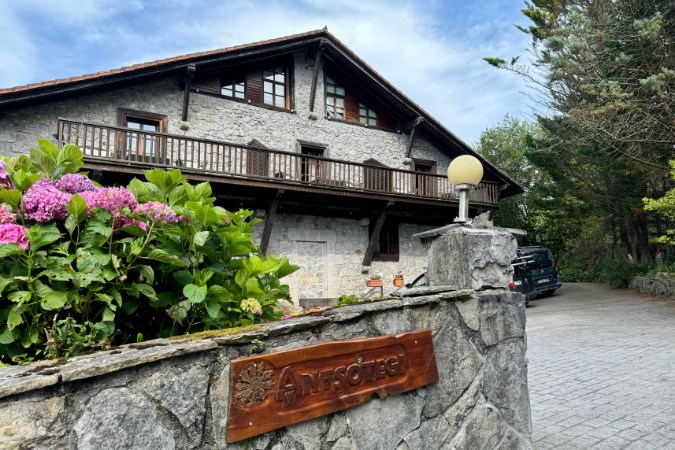
ACCOMMODATION
WHERE YOU STAY
Accommodation on the Camino del Norte offers a comfortable and character-filled experience. In larger towns and cities, pilgrims typically stay in 3 to 3+-star hotels or boutique-style properties. In rural areas, lodging consists of guesthouses and traditional homes converted into B&Bs, often run by local families. As the Camino del Norte is quieter and less developed than more popular routes, accommodation can be more limited and modest—especially in remote stretches. In some cases, lodgings may be located off the main trail; when this happens, transfers are arranged to and from the Camino to ensure a smooth and uninterrupted walking experience. All accommodations are private and include en-suite bathrooms—a simple yet welcome luxury that allows pilgrims to rest well and fully focused on the journey ahead.
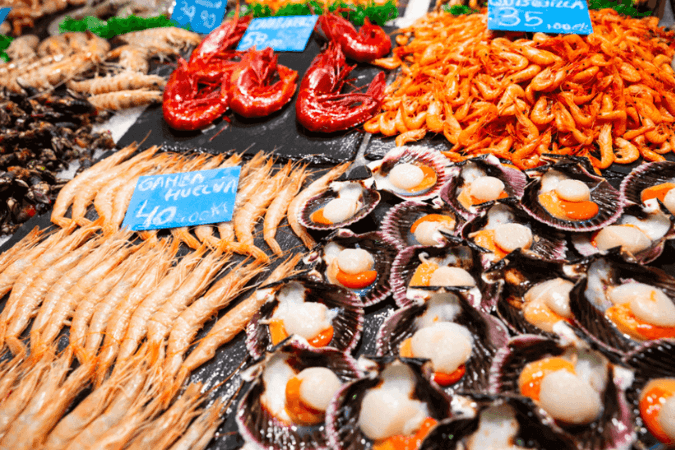
GASTRONOMY
FOOD & WINE
For food lovers, the Camino del Norte from Gijón to Ribadeo offers a rich taste of Asturias and Galicia. This coastal stretch is renowned for its fresh seafood, including clams, mussels, and octopus, as well as hearty Galician stews and artisanal cheeses. Pilgrims can enjoy pulpo a la gallega (Galician-style octopus), local breads, and the region’s famous empanadas. From rustic seaside taverns to bustling markets, this part of the route provides a diverse and authentic culinary experience. It’s an ideal journey for those eager to savour regional flavours alongside stunning coastal scenery.
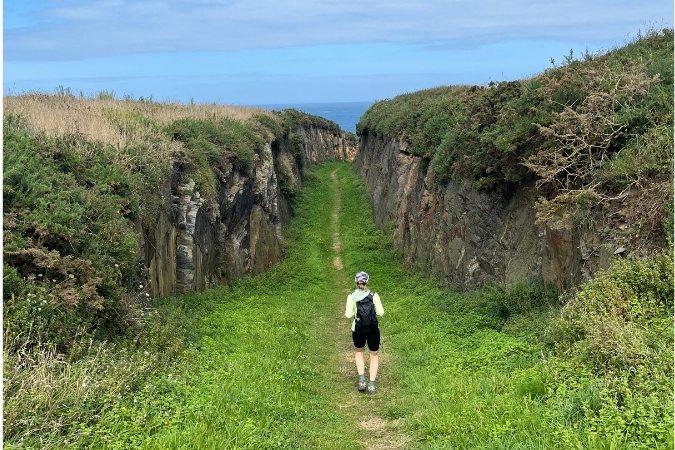
CAMARADERIE
A QUIETER CAMINO
The Camino del Norte welcomes around 20,000 pilgrims annually. Though its popularity is growing, it remains a quieter, more solitary route—ideal for those seeking reflection and space away from crowds. The stretch from Gijón to Ribadeo offers varied scenery, from rugged coastlines to peaceful fishing villages and rural landscapes. Solo traveler’s should be prepared for days with few or no fellow pilgrims, deepening the sense of solitude. This section offers a meaningful opportunity to connect with nature and oneself, making it especially appealing for those who value peaceful, introspective moments along the journey.
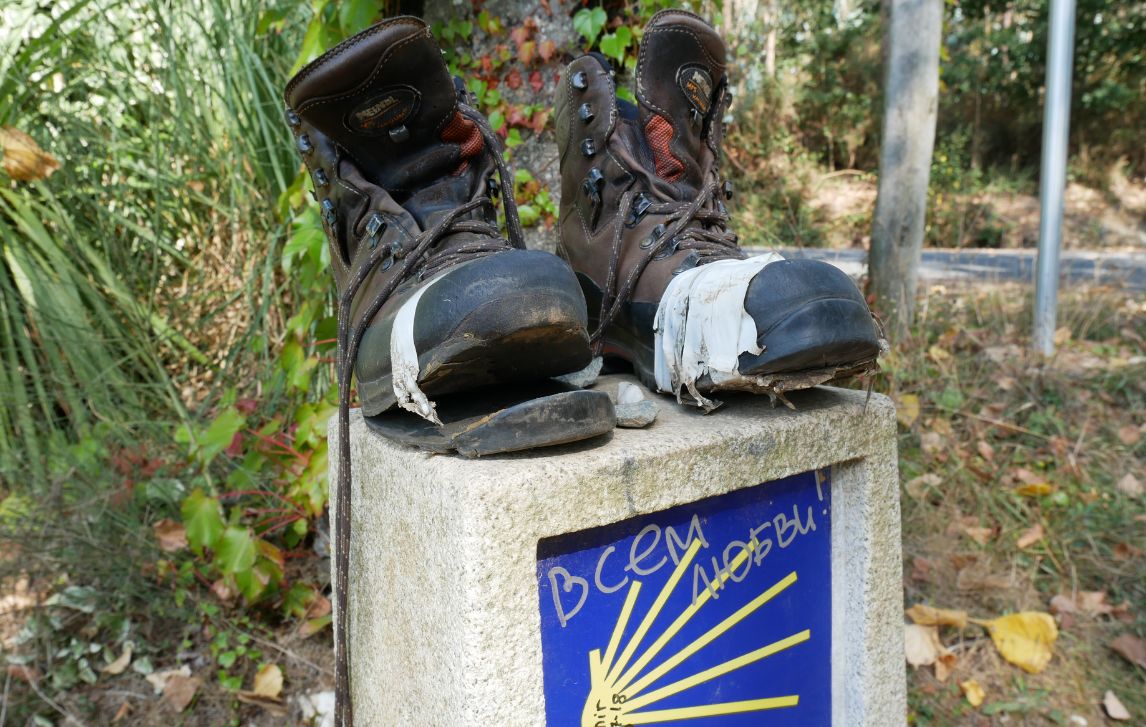
Local Support
Walk with Confidence
While our destination experts assist you in planning your trip, you can feel confident knowing that once you’re on the ground, dedicated RAW Travel staff based in Spain are available to support you in real-time throughout your Camino journey—whether it’s an emergency or any situation requiring assistance. Their contact details will be included in your pre-departure information. Although our self-guided trips typically run smoothly, it’s reassuring to know that help is close at hand if needed. Read more about our incredible on-ground support team: Germán & Daniel.

TRIP INFO & NAVIGATION
RAW TRAVEL APP
Our app gives you access to your itinerary, accommodation details, emergency contacts and weather information in one handy place. The ‘Route Maps’ feature helps with navigation when trail markings or signage is unclear or not available. You can also use it to find your accommodation and key points of interest. You still need to be self-reliant with wayfinding. As with any phone app, it’s not intended to be used constantly as you walk. For the best results with trail navigation, we recommend that you follow trail and road signs, and as a backup refer to a paper map or guidebook and our app. It’s essential to download and explore the RAW Travel app before your trip – it’s full of handy features to support your journey. Find out more here.
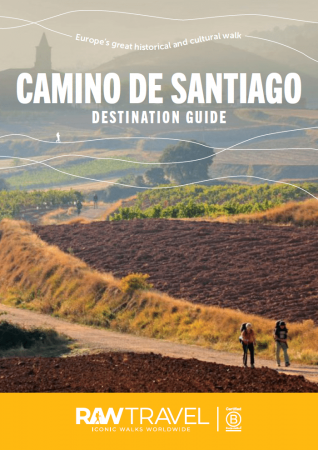
Exclusive Guide
Camino de Santiago
Walking the Camino is an incredible journey that will immerse you not only in Europe’s grand history, food and culture but most importantly the extraordinary camaraderie that exists along these routes. The spirit of the Camino de Santiago is alive and well among people from all over the world. It is a bucket list experience you will never forget! Discover inspiration, travel essentials, practical information and more in our free Destination Guide. All you need to know about walking the Camino de Santiago routes through Spain, Portugal and France!
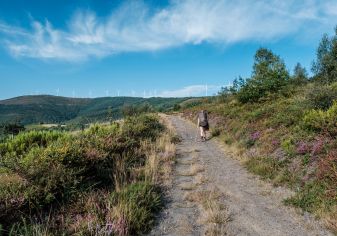
Camino Primitivo
Camino Primitivo – Oviedo to Santiago
- Journey 320km on the oldest of the Camino de Santiago routes
- Embark on an epic adventure through the heart of Asturias and Galicia
- Stay in the historic cities of Oviedo, Lugo and Santiago
- Earn your pilgrim certificate & attend the pilgrim mass in Santiago
$3,195.00
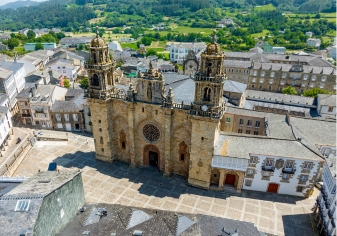
Camino Primitivo
Camino Primitivo – Oviedo to Lugo
- Trek 200km across the rugged countryside of the Camino Primitivo
- Escape crowds and enjoy Asturias and Galicia’s stunning landscapes
- Visit the historic cities of Oviedo and Lugo
- Discover medieval villages and charming hamlets
$2,095.00
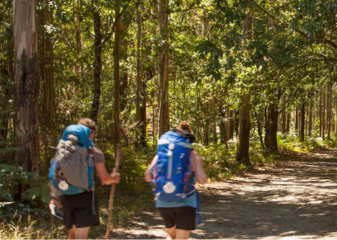
Camino Primitivo
Camino Primitivo – Lugo to Santiago
- Walk the final 109km from Lugo to Santiago on the Camino Primitivo
- Enjoy two iconic routes: Primitivo and Camino Francés
- Earn your Compostela and attend a Pilgrim’s Mass
- Finish in the historic city of Santiago alongside fellow pilgrims
$1,695.00
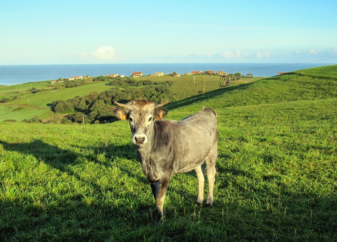
Camino del Norte
Camino del Norte – San Sebastian to Santander
- Spend time at San Sebastian’s most famous city beach – La Concha
- Savour the rich regional gastronomy of the Basque region
- Marvel at Bilbao’s iconic Guggenheim Museum
- Arrive in Santander via a traditional Pedrenera ferry boat
$3,195.00
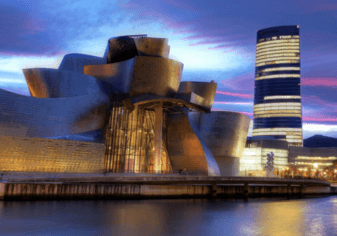
Camino del Norte
Camino del Norte – San Sebastian to Bilbao
- Marvel at Bilbao’s iconic Guggenheim Museum
- Explore medieval churches and charming seaside chapels
- Try Txakoli or Chacol an aromatic, slightly effervescent local wine
- Visit Gernika, immortalised by Pablo Picasso’s painting
$2,450.00
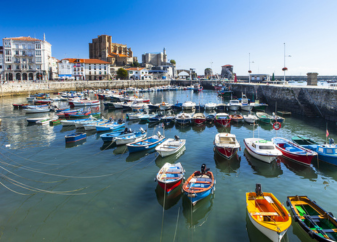
Camino del Norte
Camino del Norte – Bilbao to Santander
- Explore Bilbao’s bustling Ribera Market and riverside
- Take a dip in the Cantabrian Sea at one of the numerous fine playas
- Stop for a break in a fishing village and enjoy the local catch of the day
- Arrive in Santander via a traditional Pedrenera ferry boat
$1,895.00
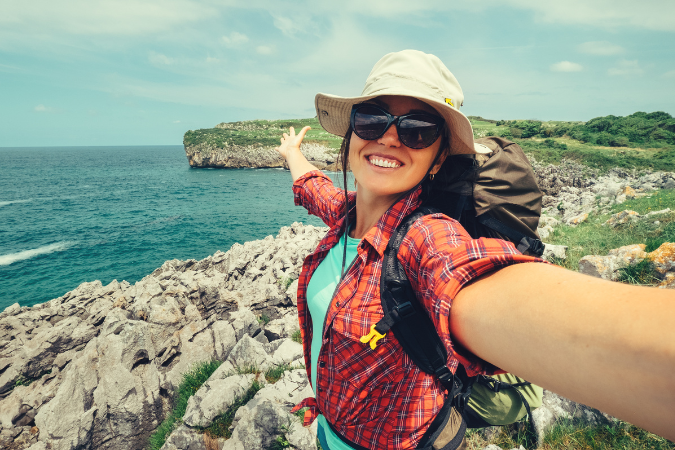
Camino del Norte
The Full Camino del Norte
- Walk the full route through Basque Country, Cantabria, Asturias and Galicia
- Enjoy the distinct cuisine and local delicacies of each region
- Relax on some of the many world-famous beaches along the way
- Discover Spain’s rich history, architecture and culture
$8,750.00
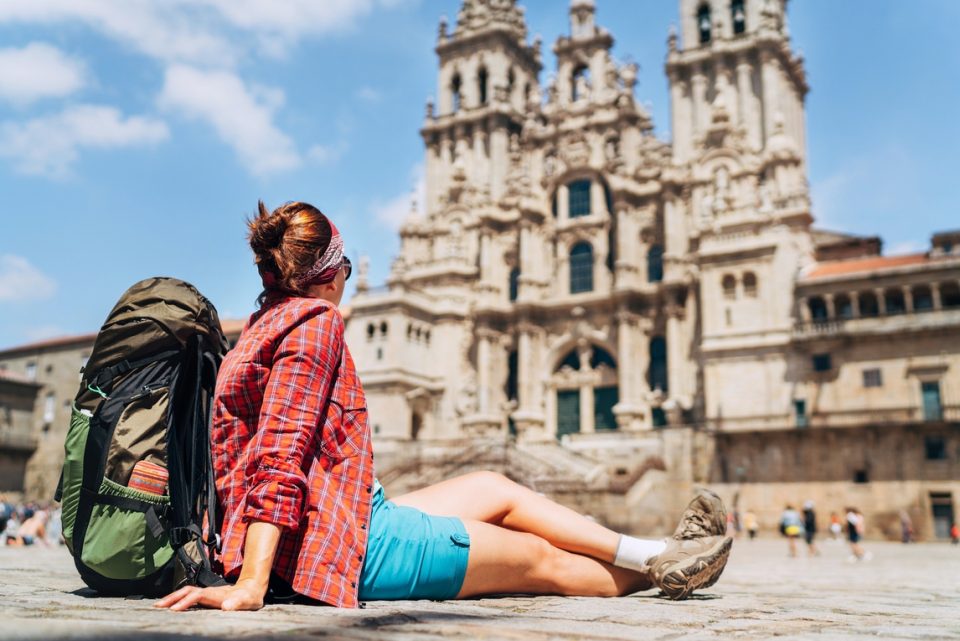
Camino del Norte
Camino del Norte – Ribadeo to Santiago de Compostela
- Visit Ribadeo’s coastline and the spectacular Praia das Catedrais
- Enjoy the solitude hiking the through peaceful rural Galicia
- Join in the excitement with many pilgrims as the Camino routes converge
- Qualify for your compostela by walking the last 100km into Santiago
$2,035.00
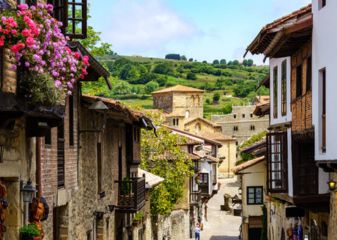
Camino del Norte
Camino del Norte – Santander to Gijon
- Soak up the seaside vibes and fine seafood in Santander
- Hike the beautiful coastline and rugged mountains of the Costa Verde
- Marvel at the seascapes and biodiversity of the Oyambre Natural Park
- Enjoy the dramatic scenery and beautiful beaches in Llanes
$2,720.00
TRIP date selection
when would you like to travel?
Please select your preferred dates for on-demand trips or select a scheduled date for group departures. If you have booked a self-guided trip please understand that because your trip date is on demand and we must check availability of all properties on your chosen dates before it can be fully confirmed


